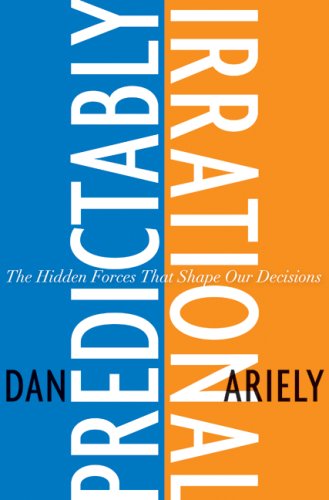
I’m halfway through Predictably Irrational by Dan Ariely and I must say that this is my new marketing bible for observing the seemingly irrational behavior of consumers when certain buzz word concepts like “free,” “value added,” “extra” and “unlimited” are brought into the marketing copy. It’s a beautiful book — and if you’re the type who enjoyed other books like Freakonomics, The Long Tail and Tipping Point, this is another must have to your collection.
One of the chapters in Ariely’s book talks about a concept known as “anchoring.” The premise is that consumers never make choices based on a product’s price alone, but rather based on the relative price of something else. When you buy a mobile phone for instance, you always compare the affordability based on a previous phone you owned, or with the relative price of similar units. More importantly though, the book talks about how consumers’ anchor price can change. We used to pay P5.00 for a sachet of Blend 45. Now we pay P100.00 for a cup of Starbucks. Ariely explains how “perceived value” raises the anchoring price of things we buy. Starbucks’ ambiance makes you feel like you’re drinking quality coffee and marketing changed “small,” “medium,” and large to “tall,” “venti” and “grande.” It’s like stepping into a different country where the relative price of everything is different.
Sadly, anchoring of prices can work negatively as well for consumers when marketers weave in the concept of “free” “bottomless” or “unlimited” which is a very powerful word in this industry. When we see “bottomless iced tea” in the menu, we go for it, and restaurateurs know we will – that’s why they price it high even if we only finish two or three glasses – still way beyond break even price. The “Unlimited” calls and texts of SUN for instance charge P25.00 per day, which is P750.00 per month. The average prepaid usage for calls is 214 minutes per month based on consumer research and at a buck per minute for “unlimited rates,” that’s really P214.00 per month for calls. On a daily average, calls should cost P7.14 per day, not P25.00 (more less 350% higher?). There’s something that’s also not factored in – dropped call rate, which according to the NTC – SUN has the most alarming drop call rate at almost 20%.
There’s a third example – when you walk into a department store and see three LCD TV’s – a Samsung, SHARP, and a SONY in the showcase all at different prices, you tend to take a look at the weakest link (Samsung usually keeps the lowest priced ones) in comparison to the other two “higher end” and “higher priced” units. The fact is, the salesman built this arrangement on purpose so you can compare the cheaper unit side by side the other much higher priced units. Instinct tells you you’re getting a great deal on the most affordable unit, and so you buy it! The truth? That’s what the salesman wanted to push in the first place to meet his quota. He could have very well lined up the most expensive TV from the set (the SONY) alongside other cheaper or more expensive promos.
That’s why perceived value is always relative to something else. Comments?